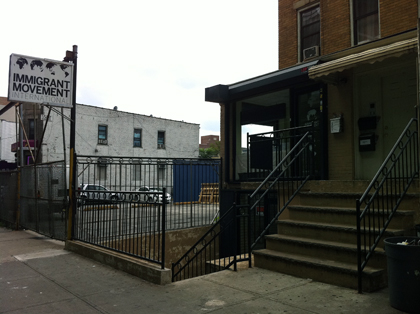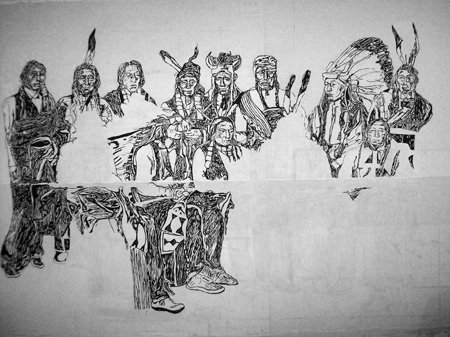Artistic Sensibility, Civic Responsability
Thursday, August 11th, 2011
Since the 1990s, Tania Bruguera has exhibited widely, making performances, staging interventions, and creating installations that destabilize received notions of power. Perhaps her most recognizable work is her performance “The Burden of Guilt” (1997-1999), in which the artist, wearing a raw-lamb carcass, eats dirt with her hands; the performance, we later learned, was a re-enactment of a colonial legend in Cuba, a suicide attempt; a legend of an indigenous act of resistance against the Spanish.
In the last decade, the protagonist role that the artist’s body had in her earlier work, disappeared almost entirely. In her placement, Tania Bruguera has engaged actors, and more usually invited the general public to perform. In one of a series of artworks titled “Tatlin’s Whisper,” Bruguera hired two policemen on horseback with expertise in controlling riots to choreograph the course of the museum’s audience. That performance was presented in 2008 at the Tate Modern’s Turbine Hall, as part of the two-day exhibition The Living Currency (La Monnaie Vivante) curated by Pierre Bal Blanc. In another work in the series “Tatlin’s Whisper,” the public could use the microphone to exercise a minute of free-speech. This latter work was staged in 2009 at the Centro Wilfredo Lam in Havana. I should add: authorities were not exactly pleased.
As part of an expanded artistic practice, Tania Bruguera has taught and lectured internationally, and in her native Cuba created an itinerant art school called Catedra Arte de Conducta. This school, which she begun in 2002 and concluded in 2009, created dialogues between local artists and visiting architects, theorists and other creative professionals in order to envision and discuss ways in which art contributes to society. Through courses for performance and time-based art, a new generation of artists could and would be encouraged to work politically with their social reality.
This year, Tania Bruguera has come to live in New York City to initiate another of these kinds of projects. Initiated by the Queens Museum and Creative Time, this new, long-term art project by Tania Bruguera is called “Immigrant Movement International” and emerges from her long-standing inquiry on ‘useful art’. One of the artist’s main supporters, the art critic Claire Bishop, has explained Tania’s idea on useful art as a “conjunction of political action and illegality … pushing the boundaries of what authority recognizes acceptable”.
To what extent and for who will the “Immigrant Movement International” be useful? Well, I suppose this we will learn in the coming months, possibly over the next couple of years. I am confident, though, that this project will at the very least remind us of the role of the modern public museum, which is to cultivate its audience with the aim of creating civic responsibility; of building more informed and creative audience, a more productive and sensible citizen. This responsibility is one that a handful of contemporary artists, including Tania Bruguera, have been taking on to themselves.
The image above is of the headquarters of the Immigrant Movement International in Corona, Queens in New York, which I visited yesterday afternoon. Events take place daily. Consult the website for more details and a calendar of programs: http://immigrant-movement.us.



